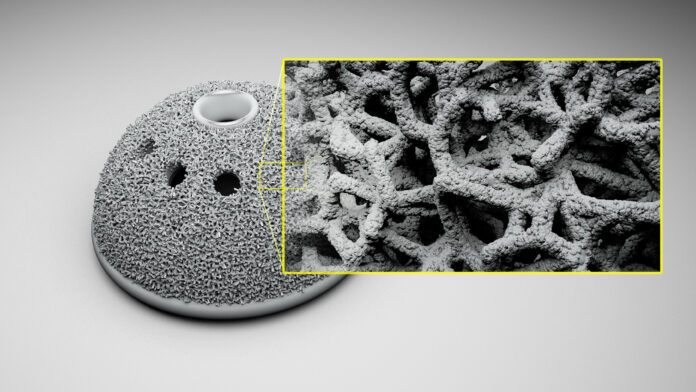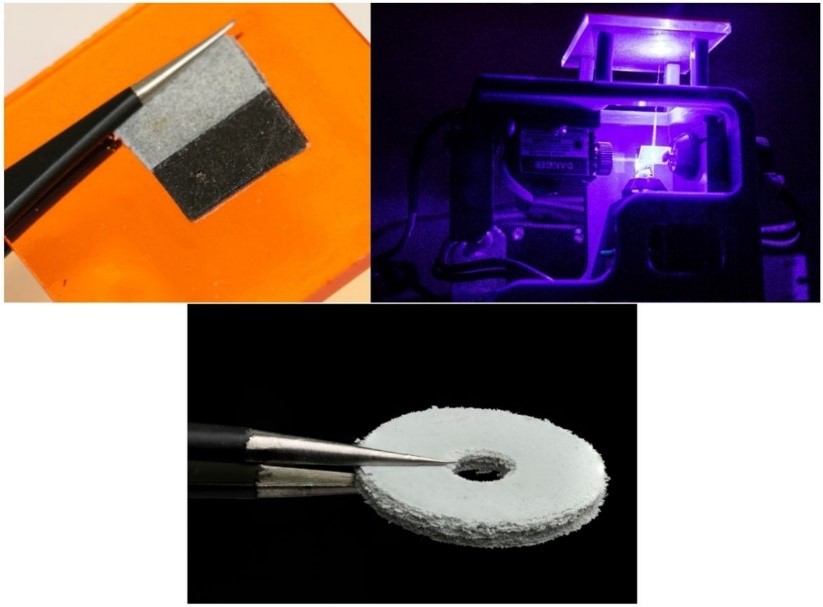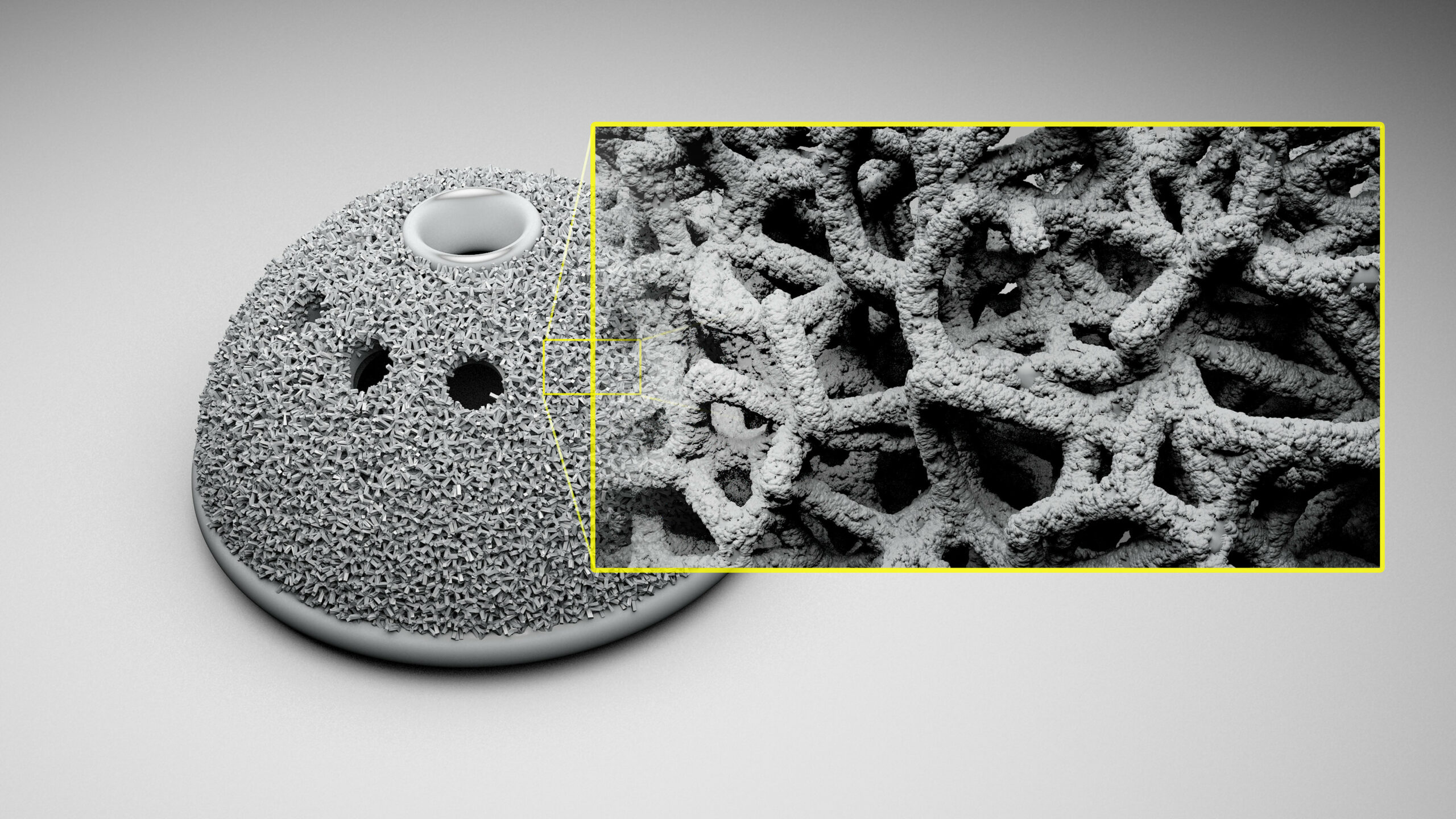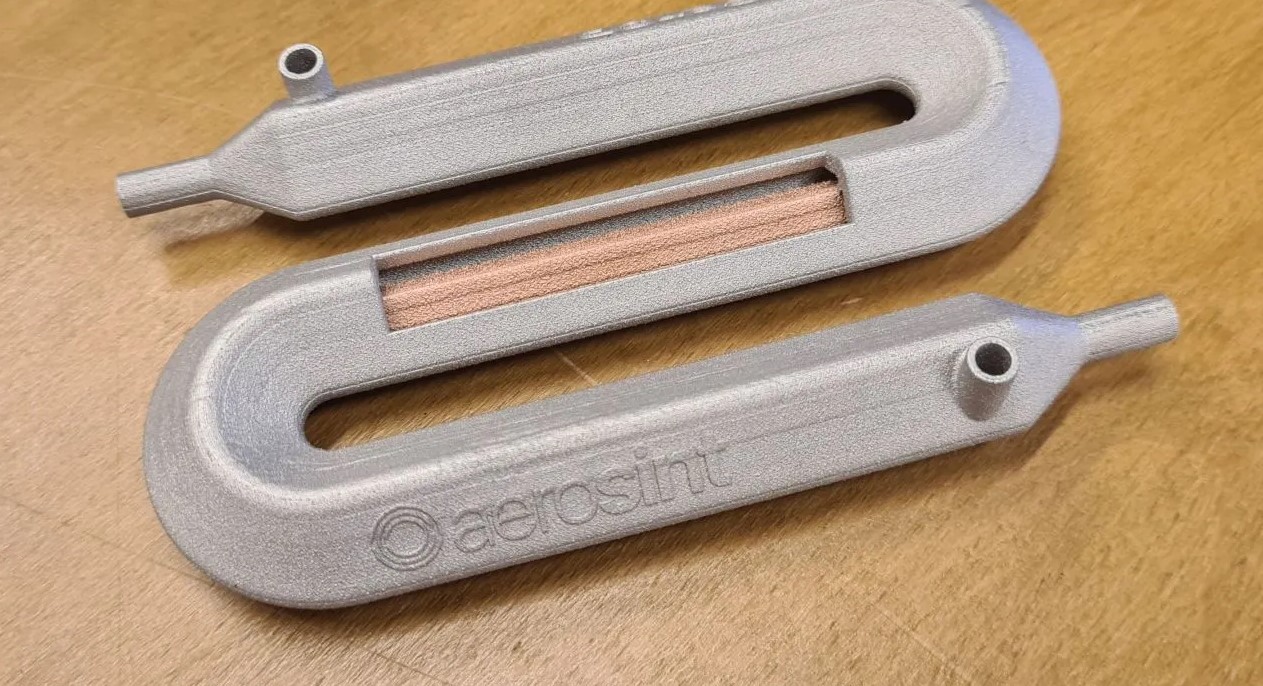
Multi-material 3D printing is hot. Who wouldn’t want to receive a part that meets the ‘best value for money’ criterion? That’s the most important unique selling proposition (USP) of multi-material 3D printing. Like most AM technologies you would tell me, but multi-material 3D printing has a more appealing argument when one understands the manufacturing process: using multiple materials at the same time to fabricate an object. This means that from product development, prototyping, and internal tooling, to low volume production parts, this manufacturing method can bring a significant return on investment – if well performed. So, where does the drawback lie?
Multi-material 3D printing (MM3DP) raises confusion in the way industries should define. Is it a type of AM process? Is it a form or a procedure added to an existing manufacturing process? Both industry and academics fail to find common ground yet.
At 3D ADEPT, to avoid further confusion in the way we will discuss this topic, we have considered multi-material 3D printing as a “specific procedure” that defines the type of AM process you leverage; a procedure that can be applied to several types of AM processes.
So far, we have identified six different types of AM technologies that can use this procedure: Fuse Filament Fabrication (FFF – with single nozzle or multi-nozzle), Stereolithography (SLA), Material Jetting, Binder Jetting, Directed Energy Deposition (DED) and Powder-Bed/SLS.
Interestingly, the Aerosint team splits the difference and considers MM3DP as both a procedure and a new type of manufacturing process:
“The new multi-material aspect can be seen as adding a degree of freedom (and complexity) to existing techniques. However, being able to use 2 materials in a single bed also offers other, perhaps somewhat unexpected, possibilities.
For instance, using the multi-material deposition to deposit virgin powder alongside recycled powder. This can make it possible to only use the virgin powder to build the parts, fill the rest of the bed, and build support, with recycled used material. Perhaps this angle is more ready for industrial adoption.
Likewise, as in FDM, perhaps a second material can be used for printing just supports.
Finally, our focus is on the material deposition. While it is indeed useful for powder bed-based AM, powdered materials are used in other production techniques as well. I already mentioned traditional powder metallurgy (PM) for one. Technically nothing stops an end-user from trying to control which powder is located where in a die using selective powder deposition to make multi-material parts in this manner. If you will, this falls somewhat between AM and PM.”
Regardless of the type of technology with which it is associated, multi-material 3D printing’s adoption remains relatively slow across industries. To understand the reasons behind this slow uptake, this feature will look at:
- The manufacturing process itself
- The materials’ standpoint
- The software perspective.
- The market reality
Several technologies enabling multi-material 3D printing will be cited as examples. Moreover, to address this topic, two organizations joined us: the Aerosint team (Bram Neirinck, Maxime Schoenmakers, Edouard Moens de Hase) that brings the manufacturer’s point of view and the KU Leuven AM team (Prof. Brecht Van Hooreweder, Dr. Louca Goossens & Dr. Jitka Metelkova) that brings the academic and user perspective.
The manufacturing standpoint
Amid the list of advantages that are often mentioned when talking about multi-material 3D printing, the most highlighted are often speed and precision.
“From an end-user perspective, the total lead-time can be further reduced by using multi-material printing. Especially when it comes to assemblies, which typically require joining operations such as welding, bolting, gluing, etc.”, the KU Leuven team comments.
However, the arguments of speed and precision can easily be highlighted in other AM processes. In the case of multi-material 3D printing, comparison is usually done with a single material manufacturing process – which in our opinion, can be a double-edged sword.
Machine manufacturers should pay attention to the way they qualify their multi-material 3D printing processes, especially when targeting industrial prospects, because not only can the latter have different benchmarks in mind, but if these requirements are not met, they could easily disqualify their systems.
For these reasons, we understand the nuances the Aerosint team establishes here when they state, it is difficult to say that the manufacturing process with a multi-material approach is automatically faster:
“This depends on what shapes and applications you compare, and which manufacturing methods you want to compare.
Much like with single material AM, it is hard to compare with traditionally machined parts and methods. As we have more design freedom / other design rules, often the focus will be more on optimizing the design and functionality of the parts. As a result, parts made for the same application might look completely different.
In our case specifically, our benchmark is the layering of powder with a standard scraper. Currently our recoater is still slower, but we are working hard on getting the deposition speed with our multi-material recoater in the same speed range, and even potentially going beyond this.
As we don’t push a heap of powder forward over the already printed parts and powder bed, we don’t experience the same kind of friction effects resulting in rippling, undulations or defects caused by a coater hitting parts. So there is a potential for going faster if we can optimize the patterning.”

On a different note, we looked at other benchmarks that enable other multi-material approaches to stand out from the crowd. Two years ago for example, a team of engineers at Columbia University in New York modified the selective laser sintering (SLS) process by inverting the laser so that it points upwards. This change meant multi-materials printing could use the process.
Selective laser sintering traditionally consists in fusing together material particles using a laser pointing downward into a heated print bed. A solid object is built from the bottom up, with the printer placing down a uniform layer of powder and using the laser to selectively fuse some material in the layer. The printer then deposits a second layer of powder onto the first layer, the laser fuses new material to the material in the previous layer, and the process is repeated over and over until the part is completed. This process works well if there is just one material used in the printing process.

To eliminate the need for a powder bed entirely, the engineers from Columbia set up multiple transparent glass plates, each coated with a thin layer of a different plastic powder. They lowered a print platform onto the upper surface of one of the powders, and directed a laser beam up from below the plate and through the plate’s bottom. This process selectively sinters some powder onto the print platform in a pre-programmed pattern according to a virtual blueprint. The platform is then raised with the fused material, and moved to another plate, coated with a different powder, where the process is repeated. This allows multiple materials to either be incorporated into a single layer, or stacked. Meanwhile, the old, used-up plate is replenished.
Another interesting multi-material approach that is worth mentioning is the one from Inkbit, a US-based start-up that develops an inkjet 3D printer. Unlike other industrial 3D printers that are based on material jetting, this one comes with “eyes and a brain”. The company calls it a “vision system”; it is integrated inside their 3D printer and makes the machine intelligent. During the manufacturing process, each layer is scanned at micron resolution immediately after deposition. If there are any deviations from the expected geometry, they are immediately corrected in real time by remapping the next layer.
Intended for production, Inkbit develops a machine that can produce parts that contain, for instance, both a soft and a rigid area, in the same build.
These capabilities make us question the functionalities of these parts. Can we legitimately say a multi-material approach leads to multi-functional 3D printed parts? “Besides for its multi-functionality, multi-material can also be used for single material components with the extra benefit of adding support structures in another material (e.g. water soluble support), or of manufacturing micro channels filled with an easy to remove filler material”, the KU Leuven team draws attention on.
What about the mechanical performances of the part?
Whether it is a multi-material approach based on material jetting like the one of Inkbit or dp polar or based on powder-bed fusion like the one of Aerosint, the response is often the same: This field is driven by specific material demands so, there is very little data on mechanical performance.
Taking example on their technology, Bram Neirinck, Manager Sintered Applications at Aerosint, states:
“I consider multi-metal AM in this aspect to be at the stage where L-PBF was when the first fibre lasers capable of yielding dense parts became available. Though the potential is there to yield parts of which the properties can compare to billet materials welded together, the work developing this process is just getting started. One advantage we have is that L-PBF is already much better understood, therefore, we expect developments to be carried out with an accelerated rate compared to the first metal AM efforts.”

The materials standpoint
In general, the additive manufacturing industry already suffers from a lack of materials. This gap seems to be exacerbated for manufacturing processes that aim to provide multi-material 3D printing at the heart of their process.
For the two teams that contribute to this dossier, material compatibility is the major issue for main processes.
Furthermore, to address the material compatibility issue, the entire process chain has to be developed and secured from scratch: “this includes the basics like lasing strategies to post-processing such as heat treatments, and this for every single material combination”, the Aerosint team explains.
Specific considerations should be taken into account when defining the material compatibility with a multi-material 3D printing system. For metals, the KU Leuven Team notes the importance of the following items: “melting points, coefficient of thermal expansion, electrochemical compatibility, solubility and the final application. E.g.: heat cycling of a component. This can then significantly influence the stress level in the component, leading in the extreme case to crack initiation and fatigue failure.”
“Because we are combining materials, it will rely a lot more on fundamental metallurgy. We are directly involved in a project which is just looking on the effect of miscibility and chemical reactivity on the potential to process materials”, the Aerosint team adds, speaking of their technology.
Other challenges related to the use of multiple materials at the same time include the case where the component is in contact with an electrolyte. This leads to galvanic corrosion that strongly affects the component’s lifetime. “There is also a risk of materials mixing, especially for powder bed-based technologies, rendering the unconsolidated leftover powder useless. An approach to solve this is to add an extra filler material and only deposit the material needed for fabrication. The filler material can then be recycled for reuse”, the KU Leuven completes.
As seen across other segments, one of the key solutions to address these materials issues is by fostering collaborations between material producers and machine manufacturers.
The software perspective
As you may know, multiple file formats are suitable for AM. Nevertheless, not all of them support the definition of different materials in the same file as the geometry. STL, OBJ, and PLY for instance, cannot directly achieve “multi-material support”. To use the STL file format, the engineer needs to save one STL mesh per material, which results in multiple files for the same 3D objects. The OBJ file format for instance, needs to be accompanied by the MTL file format.
File formats that easily support multi-material printing include 3MF (the new standard file format for 3D printing backed by the 3MF Consortium) as well as VRML/ X3D (which features capabilities for including animations.)

However, certain machine vendors or parts producers may require to use other file formats with specific technical information. For instance, when printing in Polyjet, engineers would need to separate their solid bodies, specify which body should be printed with which material and save as a STEP. This can easily be done in most parametric CAD programs – although SolidWorks makes it easier.
The Aerosint multi-material process on the other hand, requires sliced scanning files as used for normal single material AM. “Only these are now split up in zones for the different materials with different parameters. We are working with the Autodesk NetFabb team on slicing specifically for this, but technically any OEM slices should work if you can load the different sections and slice them individually. The deposition if handled by a separate sliced filed indicating the required material zones. But we are using an open file format for this, and even stacked image files could be used”, they outline.
Beyond the file formats, Aerosint deplores the fact that “software tools, both for the design and modelling of parts, are often overlooked heroes of additive manufacturing. Such tools are a tremendous aid in getting the most out of the design freedom offered by AM, while circumventing limitations of different techniques. Adding an extra design parameter, like a second or third material, only fuels the imagination of the people developing these tools. In that light we’ve already printed demonstrators for Gen3D, Hyperganic and Additive Flow, and every one of these approached the potential of multi-metal parts from a different angle, truly demonstrating their creativity.”
The market reality
If you are a regular reader of 3D ADEPT Media, you certainly know we focus on applications. We believe that’s one of the most tangible ways to approach a manufacturing solution. Multi-material 3D printing can be used through various processes, and as such, this approach makes room for a myriad of possibilities.
“To get a grasp of this, you only need to consider the number of applications where people have optimized material properties in parts to increase their properties. It’s like hardening the teeth on steel gears, applying chrome plating to make something rust or scratch resistant, over-moulding TPU rubber onto tool handles to make them more comfortable, … Even in AM Scaffold sections have been used to control the E-modulus locally in medical implants to avoid stress shielding. And that is without changing the material itself. A lot of these can be driven to the next step if the actual material composition can be controlled locally”, Neirinck enthuses.
The KU Leuven team also mentions several examples which involve tools with ductile impact absorbing core and hard & wear resistant outer layer; heat exchangers with conductive but non-structural zones combined with strong and stiff regions for load absorption as well as structural parts with local gradient in stiffness, conductivity, magnetic properties.
This dossier has first been published in the 2022 January/February of 3D ADEPT Mag.

That being said, we came to realize that most industrial 3D printers that propose a multi-material approach are often based on FFF or DED. Although they present a big potential for the market, there is still a wide range of multi-material 3D printing processes that are not leveraged at the production level. Certain inventors are still enhancing their technology while machine vendors who already operate as standalone companies, first target research institutes.
On the other hand, as Boeing’s Melissa Orme told 3D ADEPT Media in an interview, if companies continue to invest in R&D to enhance AM technologies, that’s only because they see the immense value of the technology. This argument applies to MM3DP. However, let us not forget that, the more investments are made, the more the technology will be expensive for the buyer. This will inevitably raise the need to justify the cost, and in an industrial setting, this can only be done if we deal with “high end use cases with often stringent requirements”, as per the words of Neirinck.
As Neirinck recalls: “We must remember that we are, with additive manufacturing, competing with manufacturing techniques that have been around for at least the better part of a century”. So, there is reason for optimism when we look at how far the AM community has come.





